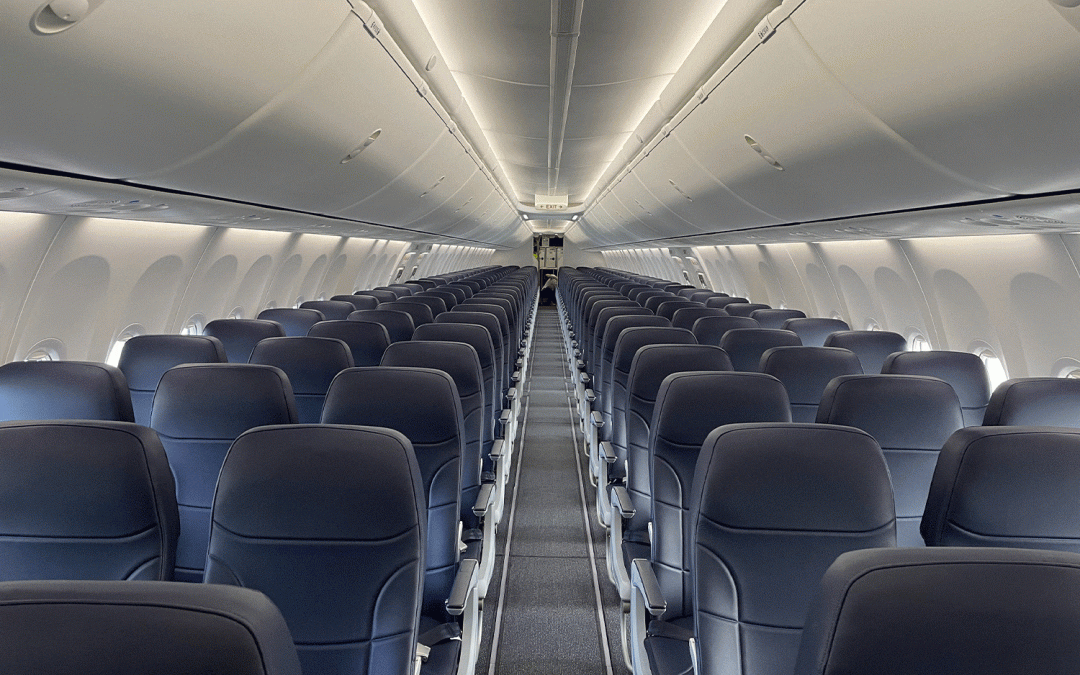Who Gets the Armrest on an Airplane: There Is No Debate
Airplane travel can be a stressful experience. From navigating crowded airports to dealing with cramped seats, airline passengers often find themselves in close quarters with strangers. One common source of tension is the question of who gets the armrest on an airplane. I have had enough of it, Today we will discuss airplane armrest etiquette and offer some helpful tips for maintaining harmony during your flight.
The Window Seat Gets The Additional Armrest
Airplane seats typically come in rows of three, with window, middle, and aisle seats. The general consensus among frequent flyers is that the person in the middle seat has the most claim to both armrests. This is because the middle seat is considered the least desirable due to its lack of personal space and absence of a window or easy aisle access.
In recognition of these disadvantages, it is generally accepted that the middle seat passenger should have access to both armrests as a small consolation. Meanwhile, those seated in window or aisle seats can enjoy the armrests on their respective sides but this is incorrect. Im positive someone sitting in the middle seat convinced everyone to believe this because everywhere online you look there are a bunch of people agreeing that the middle seat gets 2 armrests.
The reason why the window seat gets the extra armrest is if you look closely at the armrest on newer airplanes such as the 737 Max for American Airlines the number of the seat is placed on the front of the armrest. The armrest on the opposite side of the window also controls the passenger’s seat and is usually where things such as the table trays and seat recliner buttons are located. If you ever sit in the emergency row of an airplane you will notice that there are no flip-down table trays or tv screens in front of you. That is because the table tray is located inside the armrest. If you pull the table tray out then the middle person would not be able to share the armrest with you because the lid flips out towards the direction of the middle seat passenger preventing them from using it.
Sharing is Caring
While the window seat passenger may have dibs on both armrests, it’s essential to remember that airplane travel is a communal experience. If you’re sitting in the window seat, try to be mindful of the comfort of your fellow passengers. Be open to sharing the armrest if someone else reaches for it, and avoid taking up more space than necessary.
If the person sitting next to me wants to share the armrest I normally have no problem with it. I remember one time on a flight coming back from a Thailand trip I just left Los Angeles and was heading to North Carolina. There was this older lady that woke me out of my sleep by poking me. I look up at her and she is pointing at me to move my elbow off the armrest. I thought it was rude so I closed my eyes and tried to go back to sleep. So she does it again. I pointed at the number and letter of the seat that was on the armrest and went back to sleep. Please don’t wake me out of my sleep lol. This leads me to our next topic below.
Communication is Key On Flights
The art of communication is an essential skill, especially when it comes to navigating the shared spaces on an airplane. The armrest, a common source of contention between passengers, is one such space. If you find yourself in the middle seat with two armrests, it’s generally accepted that they are yours to use. However, if you’re in an aisle or window seat and would like to use the shared armrest, a polite conversation can often help. You could say something like, “Would you mind if we share the armrest?” Usually, people are understanding and willing to compromise.
While sharing an armrest can be sorted out with a simple conversation, moving in and out of your seat, particularly when you’re not in an aisle seat, can be a bit more complex. It requires disrupting your seatmates, which can make for an uncomfortable situation. However, clear and polite communication can make this process smoother. Let your seatmate know if you tend to get up frequently during flights, so they’re not taken by surprise.
When you do need to get up, a simple “Excuse me, I need to get out,” usually suffices. Try to minimize the number of times you have to get up by planning your movements. For instance, if you know you’ll need to use the restroom during the flight, try to do so when you’re already up for a meal service. It’s also considered polite to get up and move around when the person in the window or middle seat needs to get out, rather than just retracting your legs.
Consideration for the other person’s comfort can go a long way in ensuring a pleasant flight. If you’re on a long-haul flight and plan to sleep, let your seatmate know so they can make any necessary movements before you doze off. Similarly, if you see your seatmate sleeping, avoid waking them up unless absolutely necessary.
In conclusion, the key to a pleasant and conflict-free flight often lies in open and respectful communication. Being considerate of your seatmate’s comfort and using polite, clear language can help make the journey more enjoyable for everyone involved. Remember, everyone is trying to get through the flight as comfortably as possible, so a little kindness and understanding can go a long way.
Be Flexible On Airplanes
Keeping the peace during an air travel journey often requires flexibility and understanding. Airplanes are shared spaces, and being considerate of others can greatly improve the experience for everyone on board. A great way to demonstrate flexibility is by being accommodating with seating arrangements. If a family or a couple is separated, and you’re asked to switch seats to allow them to be together, consider agreeing if it doesn’t significantly impact your comfort.
Another aspect of flexibility on flights involves the use of shared amenities. For instance, the armrest is a common area of contention. Instead of insisting on monopolizing it, you could offer to share or take turns. Similarly, the overhead bins are shared spaces. Being flexible and efficient with your luggage can help ensure that everyone has room for their belongings.
Flexibility also comes into play when dealing with unexpected flight delays or cancellations. While these situations can be frustrating, remember that they are usually due to factors beyond the control of airline staff. Maintaining a calm demeanor and treating staff with respect can help keep the peace and may even lead to a more favorable outcome, such as being rebooked on a better flight.
The ability to adapt to changing situations is particularly important on long-haul flights. You may need to adjust your sleeping schedule to the new time zone before you arrive, or accommodate meal times that are different from your usual routine. Being open to these changes can make the journey less stressful and help minimize jet lag.
Lastly, being flexible means understanding and respecting that everyone’s travel experience and comfort levels are different. Some passengers might be anxious flyers, some might be dealing with health issues, and others might be traveling with young children. Exercising patience, offering assistance where appropriate, and simply giving others the benefit of the doubt can contribute to a peaceful and positive flight experience for all.
Avoid Fighting Over The Airplane Armrest
Air travel can often bring out the worst in people, particularly when it comes to the contentious issue of airplane armrests. The unwritten rule of air travel etiquette suggests that the passenger in the middle seat gets both armrests, while those in the aisle and window seats each get one. However, not everyone follows this rule, leading to silent battles over who gets control of the armrest. Instead of engaging in these battles, consider taking a more diplomatic approach. Communication is key – politely express your discomfort or negotiate an arrangement that works for both you and your seatmate.
Upgrading your seat can also help avoid such conflicts. First-class and business-class seats are typically more spacious and comfortable, providing ample space for each passenger. These seats usually come with their own dedicated armrests, eliminating the need for armrest disputes. Additionally, passengers in first class enjoy a host of other benefits, including priority boarding, gourmet meals, and superior in-flight service, making the upgrade well worth considering if it fits within your budget.
However, first-class may not always be feasible due to its considerably higher price tag. In such cases, Economy Plus or premium economy can serve as a good compromise. These seats offer more legroom and wider seats compared to standard economy, providing a more comfortable flying experience without the hefty cost of a first-class ticket.
Economy Plus seating can also provide a more peaceful travel experience. With fewer seats in this section, there’s less chance of being seated next to a disruptive passenger. Moreover, some airlines also offer additional perks with Economy Plus, such as free drinks or enhanced meal options, adding to the overall comfort of your journey.
In conclusion, while armrest battles are an unfortunate reality of air travel, they can be avoided through effective communication or by choosing to upgrade your seat. Whether you opt for first-class or Economy Plus, the extra comfort and space can make your flight more enjoyable and stress-free. It’s always worth considering these options, especially if you’re embarking on a long-haul flight.
Please let me know below in the comments. What are your thoughts about who gets the armrest on an airplane and why? Thanks for reading this Travel Blog.

